National Registry Research Department
Impact of Burnout on the EMS Workforce
Read more about how burrnout is impacting the EMS workforce.
Learn more
Trends in EMS Workforce Demographics
EMS workforce has seen only modest changes in diversity.
Learn more
Placement and Use of Pediatric Vascular Access in the US
Winner - Best Oral Presentation by EMS Professional.
Learn more
REQUEST DATA OR WORK WITH US
Have a question or a data request about the National EMS Certification database?
Please fill out this form below and follow the directions:
Research Data Use Policy
THE NATIONAL REGISTRY EMS RESEARCH FELLOWSHIP
Interested in applying or learning more about the fellowship? Contact research@nremt.org or call (614) 888-4484.
Qualifications:
Required:
- National EMS Certification (EMT level or higher)
- Bachelors degree in Statistics, Public Health or related field.
- Masters degree in Statistics, Public Health, or related field.
- One year of job-related experience.
NATIONAL ASSOCIATION OF EMS PHYSICIANS
NATIONAL REGISTRY EMS RESEARCH PRESENTATIONS
Placement and Use of Pediatric Vascular Access in the US
|
Jonathan R. Powell, MPA, NRP; Ashish R. Panchal, MD, PhD; Rebecca E. Cash, PhD, NRP
Oral Presentation at the annual meeting of the National Association of Emergency Medical Services Physicians / January 2022 / Prehospital Emergency Care January/February 2022, vol. 26, no. 1
View Abstract
High Levels of Medical Mistrust is Prevalent in EMS Professionals
Jonathan R. Powell, MPA, NRP; Megan Gregory, PhD; Jordan D. Kurth, MSEd; Sarah MacEwan, PhD; Eben Kenah, ScD; Ann Scheck McAlearney, ScD, MS; Ashish R. Panchal, MD, PhD
Poster Presentation at the annual meeting of the National Association of Emergency Medical Services Physicians / January 2022 / Prehospital Emergency Care January/February 2022, vol. 26, no. 1
View Abstract
Prevalence and Effect of Simulation Substitution on Paramedic Educational Program Success: A National Examination
Jordan D. Kurth, MSEd; Jonathan R. Powell, MPA, NRP; Lisa Collard; Douglas K. York PS, NRP; Ashish R. Panchal, MD, PhD
Oral Presentation at the annual meeting of the National Association of Emergency Medical Services Physicians / January 2022 / Prehospital Emergency Care January/February 2022, vol. 26, no. 1
View Abstract
Deriving National Continued Competency Priorities for EMS Professionals
Mark Terry, MPA, NRP; Jonathan R. Powell, MPA, NRP; Owen T. Traynor, MD; W. Scott Gilmore, MD, NRP; David P. Way, MEd; Andrew Dwyer, PhD; Farhan Bhanji, MD, MSc; Jordan D. Kurth, MSEd; Ashish R. Panchal, MD, PhD
Poster Presentation at the annual meeting of the National Association of Emergency Medical Services Physicians / January 2022 / Prehospital Emergency Care January/February 2022, vol. 26, no. 1
View Abstract
Systematic framework for prioritizing and incorporating prehospital evidence into competency assessments
Mark Terry, MPA, NRP; Kim D. McKenna, PhD, NRP; Jonathan R. Powell, MPA, NRP; Megan Hollern, MSML, NRP; Matt Ozanich, MHCA, NRP; Christopher T. Richards, MD, MS; Christian Martin-Gill, MD, MPH; Ashish R. Panchal, MD PhD
Poster Presentation at the annual meeting of the National Association of Emergency Medical Services Physicians / January 2022 / Prehospital Emergency Care January/February 2022, vol. 26, no. 1
View Abstract
MD, Facilities and Finances: Resources Deficiencies in Accredited Paramedic programs
Michael A. Kaduce, MPS, NRP; Jonathan R. Powell, MPA, NRP; Jordan Kurth, MSEd, Lisa Collard; Douglas K. York PS, NRP; Ashish R. Panchal, MD, Ph.D
Oral Presentation at the annual meeting of the National Association of Emergency Medical Services Physicians / January 2022 / Prehospital Emergency Care January/February 2022, vol. 26, no. 1
View Abstract
Prehospital traumatic pain management varies by neighborhood based Social Deprivation Index
Morgan K. Anderson, MPH; Jonathan Powell, MPA, NRP; Rebecca E. Cash, PhD, MPH, NRP; Douglas G. Butler, NRP; Ashish R. Panchal, MD, PhD
Poster Presentation at the annual meeting of the National Association of Emergency Medical Services Physicians / January 2022 / Prehospital Emergency Care January/February 2022, vol. 26, no. 1
View Abstract
Trends in U.S. EMS workforce demographic and employment characteristics, 2011-2019
Rebecca E. Cash, PhD, MPH, NRP; Jonathan R. Powell, MPA, NRP; Gregory A. Peters, MD; Scott A. Goldberg, MD, MPH, FAEMS; Ashish R. Panchal, MD, PhD; Carlos A. Camargo, Jr., MD, DrPH
Poster Presentation at the annual meeting of the National Association of Emergency Medical Services Physicians / January 2022 / Prehospital Emergency Care January/February 2022, vol. 26, no. 1
View Abstract
Association between EMS workforce density and population health outcomes in the U.S.
Rebecca E. Cash, PhD, MPH, NRP; Jonathan R. Powell, MPA, NRP; Gregory A. Peters, MD; Scott A. Goldberg, MD, MPH, FAEMS; Ashish R. Panchal, MD, PhD; Carlos A. Camargo, Jr., MD, DrPH
Poster Presentation at the annual meeting of the National Association of Emergency Medical Services Physicians / January 2022 / Prehospital Emergency Care January/February 2022, vol. 26, no. 1
View Abstract
Impact of Burnout on the EMS Workforce
|
Oral Presentation at the annual meeting of the National Association of Emergency Medical Services Physicians / January 24-26, 2017 Prehospital Emergency Care January/March 2017 Vol. 21 No. 1 p.91.
Winner- NAEMSP Best Oral Presentation By EMS Professional
Prehospital EMS Provider Perceptions of Errors and Safety
Oral Presentation at the annual meeting of the National Association of Emergency Medical Services Physicians / January 24-26, 2017 Prehospital Emergency Care January/March 2017 Vol. 21 No. 1 p.110
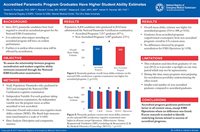
Accredited Paramedic Program Graduates Have Higher Student Ability Estimates.
Severo A. Rodriguez, PhD, NRP, Remle P. Crowe, MS, NREMT, Rebecca E. Cash, MPH, NRP, Ashish R. Panchal, MD, PhD.
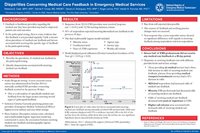
Disparities in Medical Care Feedback in Emergency Medical Services
Rebecca E. Cash, MPH, NRP, Remle P. Crowe, MS, NREMT, Severo A. Rodriguez, PhD, NRP, Roger Levine, PhD, Ashish R. Panchal, MD, PhD.
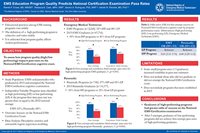
EMS Education Program Quality Predicts National Certification Examination Pass Rates.
Remle P. Crowe, MS, NREMT, Rebecca E. Cash, MPH, NRP, Severo A. Rodriguez, PhD, NRP, Ashish R. Panchal, MD, PhD.
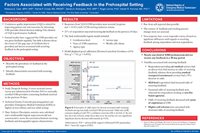
Factors Associated with Receiving Feedback in the Prehospital Setting
Rebecca E. Cash, MPH, NRP, Remle P. Crowe, MS, NREMT, Severo A. Rodriguez, PhD, NRP, Roger Levine, PhD, Ashish R. Panchal, MD, PhD.
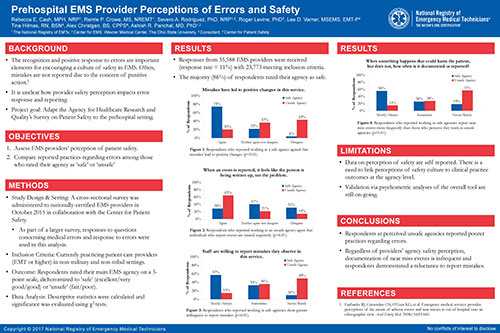
Factors Predicting a Negative Perception of Patient Safety in the EMS Workplace.
Rebecca E. Cash, MPH, NRP, Remle P. Crowe, MS, NREMT, Severo A. Rodriguez, PhD, NRP, Roger Levine, PhD, Lee D. Varner, MSEMS, EMT-P, Tina Hilmas, RN, BSN, CPPS, Alex Christgen, BS, CPPS, Ashish R. Panchal, MD, PhD.
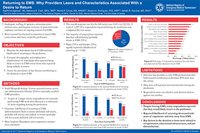
Leaving and Returning to EMS: Why Providers Leave and Characteristics Associated with a Desire to Return.
Riddhima Agarwal, BS, Rebecca E. Cash, MPH, NRP, Remle P. Crowe, MS, NREMT, Severo A. Rodriguez, PhD, NRP, Ashish R. Panchal, MD, PhD.
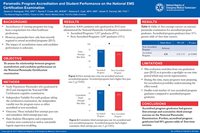
Paramedic Program Accreditation and Student Performance on the National Paramedic Certification Examination
Severo A. Rodriguez, PhD, NRP, Remle P. Crowe, MS, NREMT, Rebecca E. Cash, MPH, NRP, Ashish R. Panchal, MD, PhD.
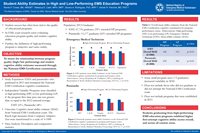
Student Ability Estimates in High- and Low-Performing EMS Education Programs
Remle P. Crowe, MS, NREMT, Rebecca E. Cash, MPH, NRP, Severo A. Rodriguez, PhD, NRP, Ashish R. Panchal, MD, PhD.
NATIONAL REGISTRY EMS RESEARCH PUBLICATIONS
Gregory ME, Powell JR, MacEwan SR, Kurth JD, Kenah E, Panchal AR, McAlearney AS. COVID-19 Vaccinations in EMS Professionals: Prevalence and Predictors. Prehosp Emerg Care. 2021 Nov 3:1-9. doi: 10.1080/10903127.2021.1993391. PMID: 34644239.
Background: Immunizations for emergency medical services (EMS) professionals during pandemics are an important tool to increase the safety of the workforce as well as their patients. The purpose of this study was to better understand EMS professionals' decisions to receive or decline a COVID-19 vaccine.
Methods: We conducted a cross-sectional analysis of nationally certified EMS professionals (18-85 years) in April 2021. Participants received an electronic survey asking whether they received a vaccine, why or why not, and their associated beliefs using three validated scales: perceived risk of COVID-19, medical mistrust, and confidence in the COVID-19 vaccine. Data were merged with National Registry dataset demographics. Analyses included descriptive analysis and multivariable logistic regression (OR, 95% CI). Multivariate imputation by chained equations was used for missingness.
Results: A total of 2,584 respondents satisfied inclusion criteria (response rate = 14%). Overall, 70% of EMS professionals were vaccinated. Common reasons for vaccination among vaccinated respondents were to protect oneself (76%) and others (73%). Common reasons for non-vaccination among non-vaccinated respondents included concerns about vaccine safety (53%) and beliefs that vaccination was not necessary (39%). Most who had not received the vaccine did not plan to get it in the future (84%). Hesitation was most frequently related to wanting to see how the vaccine was working for others (55%). Odds of COVID-19 vaccination were associated with demographics including age (referent <28 years; 39-50 years: 1.56, 1.17-2.08; >51 years: 2.22, 1.64-3.01), male sex (1.26, 1.01-1.58), residing in an urban/suburban area (referent rural; 1.36, 1.08-1.70), advanced education (referent GED/high school and below; bachelor's and above: 1.72, 1.19-2.47), and working at a hospital (referent fire-based agency; 1.53, 1.04-2.24). Additionally, vaccination odds were significantly higher with greater perceived risk of COVID-19 (2.05, 1.68-2.50), and higher vaccine confidence (2.84, 2.40-3.36). Odds of vaccination were significantly lower with higher medical mistrust (0.54, 0.46-0.63).
Conclusion: Despite vaccine availability, not all EMS professionals had been vaccinated. The decision to receive a COVID-19 vaccine was associated with demographics, beliefs regarding COVID-19 and the vaccine, and medical mistrust. Efforts to increase COVID-19 vaccination rates should emphasize the safety and efficacy of vaccines.
Lindbeck G, Shah MI, Braithwaite S, Powell JR, Panchal AR, Browne LR, Lang ES, Burton B, Coughenour J, Crowe RP, Degn H, Hedges M, Gasper J, Guild K, Mattera C, Nasca S, Taillac P, Warth M. Evidence-Based Guidelines for Prehospital Pain Management: Recommendations. Prehosp Emerg Care. 2022 Jan 25:1-10. doi: 10.1080/10903127.2021.2018073. PMID: 34928760.
This project sought to develop evidence-based guidelines for the administration of analgesics for moderate to severe pain by Emergency Medical Services (EMS) clinicians based on a separate, previously published, systematic review of the comparative effectiveness of analgesics in the prehospital setting prepared by the University of Connecticut Evidence-Based Practice Center for the Agency for Healthcare Research and Quality (AHRQ). A technical expert panel (TEP) was assembled consisting of subject matter experts in prehospital and emergency care, and the development of evidence-based guidelines and patient care guidelines. A series of nine "patient/population-intervention-comparison-outcome" (PICO) questions were developed based on the Key Questions identified in the AHRQ systematic review, and an additional PICO question was developed to specifically address analgesia in pediatric patients. The panel made a strong recommendation for the use of intranasal fentanyl over intravenous (IV) opioids for pediatric patients without intravenous access given the supporting evidence, its effectiveness, ease of administration, and acceptance by patients and providers. The panel made a conditional recommendation for the use of IV non-steroidal anti-inflammatory drugs (NSAIDs) over IV acetaminophen (APAP). The panel made conditional recommendations for the use of either IV ketamine or IV opioids; for either IV NSAIDs or IV opioids; for either IV fentanyl or IV morphine; and for either IV ketamine or IV NSAIDs. A conditional recommendation was made for IV APAP over IV opioids. The panel made a conditional recommendation against the use of weight-based IV ketamine in combination with weight-based IV opioids versus weight-based IV opioids alone. The panel considered the use of oral analgesics and a conditional recommendation was made for either oral APAP or oral NSAIDs when the oral route of administration was preferred. Given the lack of a supporting evidence base, the panel was unable to make recommendations for the use of nitrous oxide versus IV opioids, or for IV ketamine in combination with IV opioids versus IV ketamine alone. Taken together, the recommendations emphasize that EMS medical directors and EMS clinicians have a variety of effective options for the management of moderate to severe pain in addition to opioids when designing patient care guidelines and caring for patients suffering from acute pain.
Cash RE, Leggio WJ, Powell JR, McKenna KD, Rosenberger P, Carhart E, Kramer A, March JA, Panchal AR; Pandemic Educational Effects Task Force. Emergency medical services education research priorities during COVID-19: A modified Delphi study. J Am Coll Emerg Physicians Open. 2021 Aug 21;2(4):e12543. doi: 10.1002/emp2.12543. PMID: 34458888; PMCID: PMC8380062.
Objective: Our objective was to identify research priorities to understand the impact of COVID-19 on initial emergency medical services (EMS) education.
Methods: We used a modified Delphi method with an expert panel (n = 15) of EMS stakeholders to develop consensus on the research priorities that are most important and feasible to understand the impact of the COVID-19 pandemic on initial EMS education. Data were collected from August 2020 to February 2021 over 5 rounds (3 electronic surveys and 2 live virtual meetings). In Round 1, participants submitted research priorities over 9 specific areas. Responses were thematically analyzed to develop a list of research priorities reviewed in Round 2. In Round 3, participants rated the priorities by importance and feasibility, with a weighted score (2/3*importance+1/3*feasibility) used for preliminary prioritization. In Round 4, participants ranked the priorities. In Round 5, participants provided their agreement or disagreement with the group's consensus of the top 8 research priorities.
Results: During Rounds 1 and 2, 135 ideas were submitted by the panel, leading to a preliminary list of 27 research priorities after thematic analysis. The top 4 research priorities identified by the expert panel were prehospital internship access, impact of lack of field and clinical experience, student health and safety, and EMS education program availability and accessibility. Consensus was reached with 10/11 (91%) participants in Round 5 agreeing.
Conclusions: The identified research priorities are an important first step to begin evaluating the EMS educational infrastructure, processes, and outcomes that were affected or threatened through the pandemic.
Cash RE, Kinsman J, Crowe RP, Rivard MK, Faul M, Panchal AR. Naloxone Administration Frequency During Emergency Medical Service Events - United States, 2012-2016. MMWR Morb Mortal Wkly Rep. 2018 Aug 10;67(31):850-853. doi: 10.15585/mmwr.mm6731a2. PMID: 30091966; PMCID: PMC6089336.
Naloxone administration data from emergency medical services (EMS) records have been used for surveillance for opioid overdoses on a local level. Analysis of a national database of EMS events found that from 2012 to 2016, the rate of naloxone administrations increased 75.1%, from 573.6 to 1004.4 per 100,000 EMS events, mirroring a 79.7% increase in the age-adjusted opioid mortality rate. Monitoring nonfatal overdose events using EMS records provides a more complete evaluation of the potential injury burden and a means of benchmarking for communities and EMS agencies to better address the evolving opioid epidemic.
Panchal AR, Rivard MK, Cash RE, Corley JP Jr, Jean-Baptiste M, Chrzan K, Gugiu MR. Methods and Implementation of the 2019 EMS Practice Analysis. Prehosp Emerg Care. 2021 Jan 12:1-18. doi: 10.1080/10903127.2020.1856985. PMID: 33301370.
Background: The EMS Practice Analysis provides a vision of current prehospital care by defining the work performed by EMS professionals. In this manuscript, we present the National Advanced Life Support (ALS) EMS Practice Analysis for the advanced EMT (AEMT) and paramedic levels of certification. The goal of the 2019 EMS Practice Analysis is to define the work performed by EMS professionals and present a new template for future practice analyses.
Methods: The project was executed in three phases. Phase 1 defined the types/frequency of EMS clinical presentations using the 2016 National Emergency Medical Services Information System (NEMSIS) dataset. Phase 2 defined the criticality or potential for harm of these clinical presentations through a survey of a random sample of nationally certified EMS professionals and medical directors. Phase 3 defined the tasks and the associated knowledge, skills, and abilities (KSA) that encompass EMS care through focus groups of subject matter experts.
Results: In Phase 1, the most common EMS adult impressions were traumatic injury, abdominal pain/problems, respiratory distress/arrest, behavioral/psychiatric disorder, and syncope/fainting. The most common pediatric impressions were traumatic injury, behavioral/psychiatric disorder, respiratory distress/arrest, seizure, and abdominal pain/problems. Criticality was defined in Phase 2 with the highest risk of harm for adults being airway obstruction, respiratory distress/arrest, cardiac arrest, hypovolemia/shock, allergic reaction, or stroke/CVA. In comparison, pediatric patients presenting with airway obstruction, respiratory distress/arrest, cardiac arrest, hypovolemia/shock, allergic reaction, stroke/CVA, and inhalation injury had the highest potential for harm. Finally, in Phase 3, task statements were generated for both paramedic and AEMT certification levels. A total of 425 tasks and 1,734 KSAs were defined for the paramedic level and 405 tasks and 1,636 KSAs were defined for the AEMT level.
Conclusion: The 2019 ALS Practice Analysis describes prehospital practice at the AEMT and paramedic levels. This approach allows for a detailed and robust evaluation of EMS care while focusing on each task conducted at each level of certification in EMS. The data can be leveraged to inform the scope of practice, educational standards, and assist in validating the ALS levels of the certification examination.
HISTORY
In 2004, the National Highway Traffic Safety Administration and the Maternal and Child Health Bureau published a national consensus document titled National EMS Research Agenda. The writing team presented the draft document to national EMS stakeholder organizations including the National Registry of EMTs (NREMT). During open discussion, top recommendations for the future of EMS research were presented. Members of the NREMT Board of Directors and the NREMT Executive Director were present at this national consensus meeting. One of the top recommendations from this document was:
“A large cadre of career EMS investigators should be developed and supported in the initial stages of their careers. Highly structured training programs with content directed toward EMS research methodologies should be developed.”
Based on this call, the National Registry of EMTs established a Research Department and founded the EMS Research Fellowship program to address the National Research Agenda’s recommendation.
The vision of the National Registry Research Department is to develop and foster EMS-prepared doctoral researchers to function with the highest level of scientific integrity to improve and ensure high quality and innovative National Registry products and processes through evidence and collaboration. It is further the mission to contribute to the body of scientific out-of-hospital knowledge to improve the competency, health, safety and wellness of EMS professionals and the patients they serve.
The research department is overseen by the Research Director and advised by the NREMT Board of Directors’ Research Committee, which includes physicians, experts in the field and PhD researchers. This committee meets annually.

